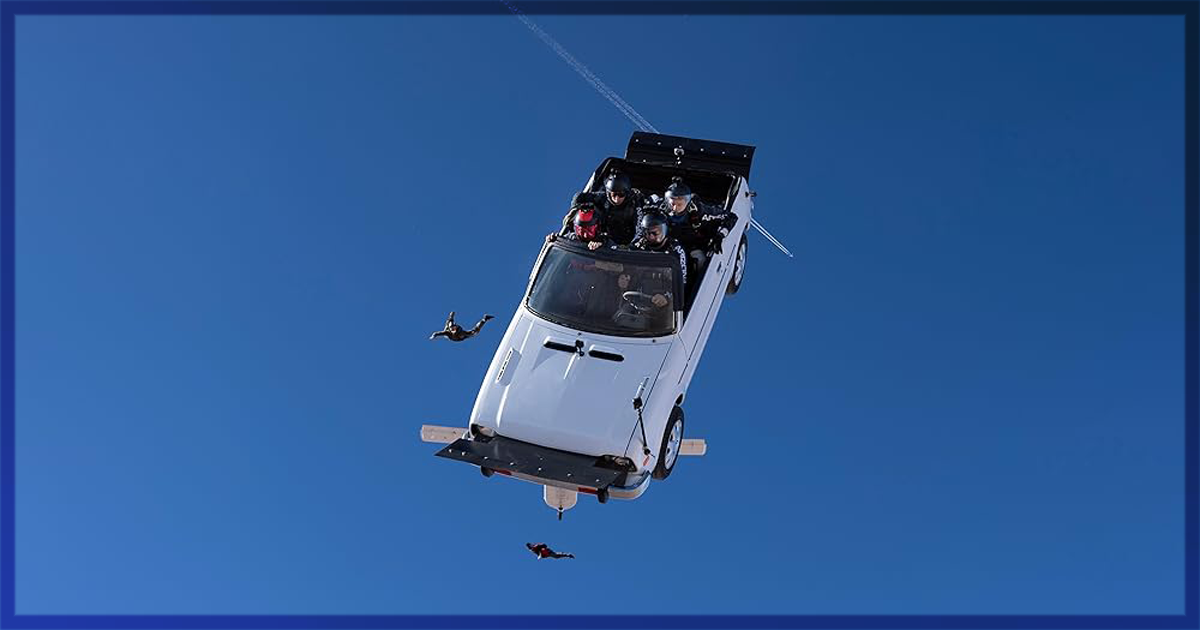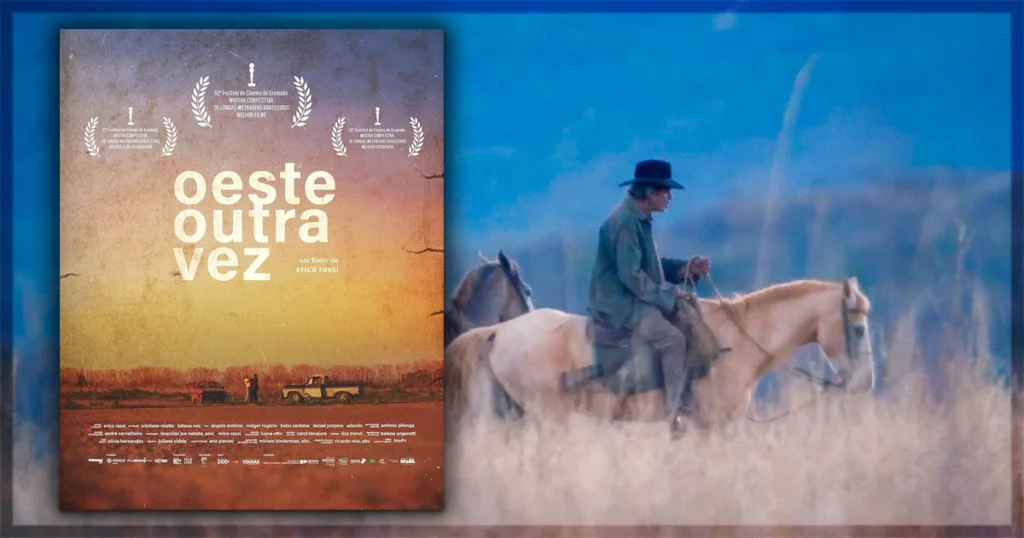Since the first presentation in Paris in 1896, moving pictures have been compiled to create kinetic movement and impress audiences. The fascination of the frames moving created a collective memory in society. Technically, the media’s pushing became the obsession of cinematographers, who aimed to point their cameras to the perfect shot. In recent years, we had the fictional example of Antler Holst (Michael Wincott) in Jordan Peele’s Nope. He is a cinematographer who sacrifices himself to get the perfect footage in his IMAX camera during the golden hour. Ultimately, it is not an exclusive trope to fiction. The materialization of this is Joe Jennings, a pioneer sky-surfer cinematographer who shifted the sport, its filming, and the subject of the documentary Space Cowboy. Throughout a career that ranges through more than four decades, he took the sky-surfing limits to the max. His megalomania impulsed him to throw multiple objects from the plane and would work his camera shot around that.
Space Cowboy, directed by Bryce Leavitt and Marah Strauch, combines a mixture of archive film with the filming of the dives. The introduction drives a high-octane setup, using Jennings’ multiple jumps. There is a sense of adrenaline and impressiveness that paints the framing – wide shots of the sky with various jumpers doing stunts while cars, sets of tables, and sofas fall off with them. In this sense, the first minutes establish the risk and the discovery sense that drives them. It even deepens the danger of the dives when one of the jumpers gets hit in the face by a car. His bloody nose and fractured face warn us about how that activity brings death close to them, but it does not bother them.
The moments following the intro lead us to a more conventional film. It is a retrospective of Joe Jennings’ life. The directors introduce the structure of a traditional biographical documentary: his growing up, college years, how he met his wife, and his love for jumping. Yet, what differs from the film is the amount of self-archive produced by Jennings. As the son of a photographer, he always had the camera near him, but he saw his work as a filmmaker as the opportunity to jump regularly. His side hustle as a cameraman for those diving for the first time allowed him to produce material and develop himself as a diver. His charisma and varied archive provide a minimal engagement to the flawed and repetitive structure that drags in the middle length of the film. The highest point of the archival part is the construction of the memory of Robert Harris, an ultimate stuntman who lost his life during the shoot of an advertisement. Harris was James Bond in the ad, but unlike the Ian Fleming character, the gadget didn’t magically appear at the last moment.
The sudden passing of Harris brings a down point in Jennings’ life. He understands the clinical state of depression and the necessity of treatment. In a sincere portrayal, the stuntman talks about his suicidal thoughts straight to the camera. He converses with us. There is a genuine sadness in losing your best friends doing what you love the most and that activity losing its meaning. Jennings even shares guilt for the depression of his child, Joey; he blames it on himself. The documentary works with the topic respectfully and delicately. It is a deep conversation and complex on its terms, but Jennings opens his heart to the camera and delivers the most emotionally engaging moments of the film.
In another aspect, the film efficiently explores the majestic power of the sky-surfing imagery. There is plenty of material to explore, and it is impressive to the audience. The inhumane act of jumping from a plane gets registered by another human also in movement, and there is an orbit of two bodies flying and the camera shooting it. All of those scenes are breathtaking and highly engaging. Besides the stress of their tentative landing on a car with the wheels upside down, which gets rushed among the emotional interviews and the adrenaline footage, the film knows how to work with the sky-diving element of it.
Space Cowboy narrates the story of a man affected by depression and loss. It explains the love for sky surfing. And how its pioneer, Joe Jennings, experimented with stunts and footage. It impresses with its marvelous images, even though it suffers from a conventional structure that drags the film from developing more emotional contact with its audience.
Space Cowboy premiered in October of 2024.
Learn more about the documentary at the DOC NYC site for the title.


